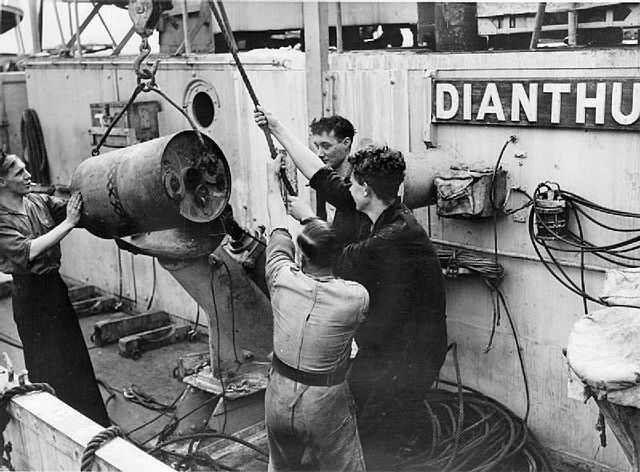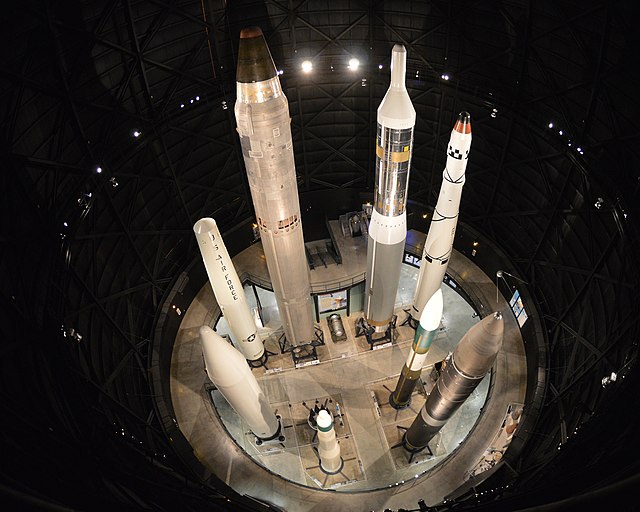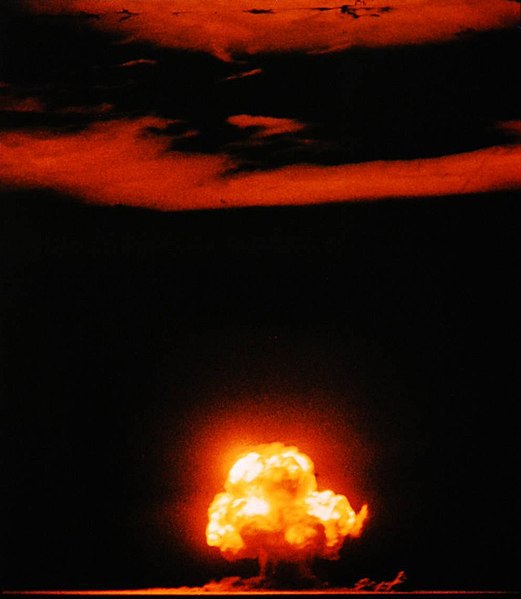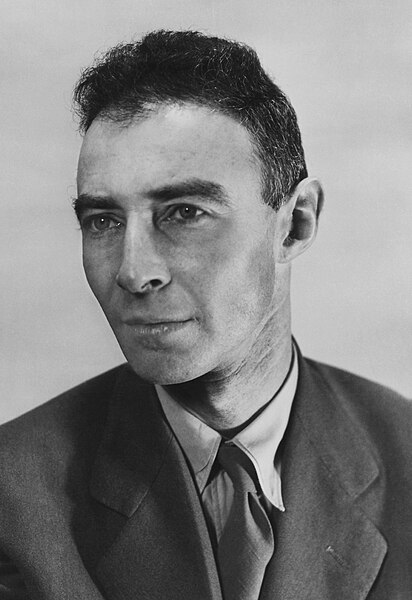Anti-submarine warfare is a branch of underwater warfare that uses surface warships, aircraft, submarines, or other platforms, to find, track, and deter, damage, or destroy enemy submarines. Such operations are typically carried out to protect friendly shipping and coastal facilities from submarine attacks and to overcome blockades.
Royal Navy officers on the bridge of a destroyer on convoy escort duties keep a sharp look out for enemy submarines during the Battle of the Atlantic, October 1941
An example of an anti-submarine net, once protecting Halifax Harbour, Canada.
11-inch Howitzer Mk. I on British armed merchant cruiser HMS Patia in 1918, it had a range of just about 600 yards (550 m)
A depth charge thrower being loaded, aboard corvette HMS Dianthus, 14 August 1942
A nuclear weapon is an explosive device that derives its destructive force from nuclear reactions, either fission or a combination of fission and fusion reactions, producing a nuclear explosion. Both bomb types release large quantities of energy from relatively small amounts of matter.
An assortment of American nuclear intercontinental ballistic missiles at the National Museum of the United States Air Force. Clockwise from top left: PGM-17 Thor, LGM-25C Titan II, HGM-25A Titan I, Thor-Agena, LGM-30G Minuteman III, LGM-118 Peacekeeper, LGM-30A/B/F Minuteman I or II, PGM-19 Jupiter
The Trinity test of the Manhattan Project was the first detonation of a nuclear weapon, which led J. Robert Oppenheimer to recall verses from the Hindu scripture Bhagavad Gita: "If the radiance of a thousand suns were to burst at once into the sky, that would be like the splendor of the mighty one "... "I am become Death, the destroyer of worlds".
J. Robert Oppenheimer, principal leader of the Manhattan Project, often referred to as the "father of the atomic bomb".
Edward Teller, often referred to as the "father of the hydrogen bomb"








